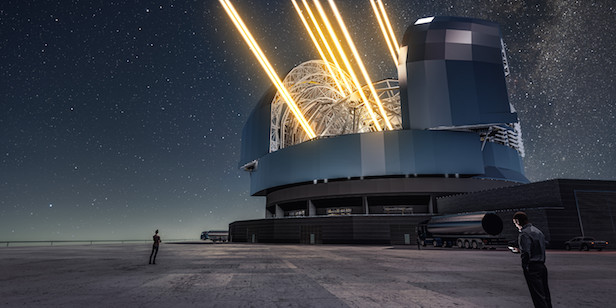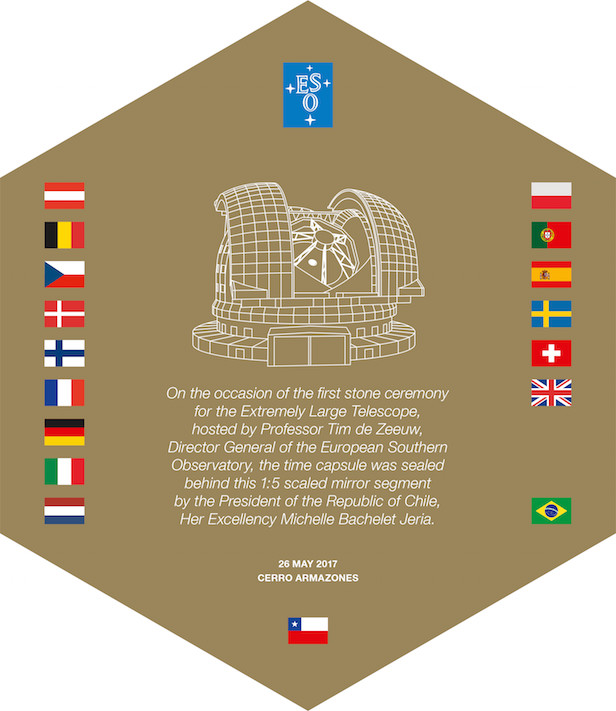‘First Stone’ ceremony signals beginning of super telescope’s construction
The European Extremely Large Telescope will observe the universe in unprecedented detail on top of a mountain in northern Chile

The ELT aims to gather first light in 2024, being the world’s largest optical telescope. Image credit: ESO/L. Calçada
The European Southern Observatory (ESO) has commemorated the first stone of the European Extremely Large Telescope (E-ELT) with a ceremony, including innovative news heard by a famous and enthusiastic crowd. Among these announcements, there was also the sealing of a ELT time capsule, which was prepared by ESO.
The ceremony was held at ESO’s Paranal Observatory, because of its close proximity to the ELT site. Several important people attended to celebrate the start of a remarkable project. These people included the President of the Republic of Chile, Michelle Bachelet Jeria, ESO’s Director General, Tim De Zeeuw, the E-ELT Programme Manager, Roberto Tamai, and the Director of the La Silla Paranal Observatory, Andreas Kaufer. Many other important people were present, as well as Chilean guests, ESO scientists and engineers and international media representatives.
As well as starting the construction of the ‘king of astronomical telescopes’, the gathering marked the appreciation of international cooperation. “With the symbolic start of this construction work, we are building more than a telescope here: it is one of the greatest expressions of scientific and technological capabilities,” says President Bachelet during her speech.

This plaque sealed the ELT time capsule for future generations at the first stone ceremony. Image credit: ESO
Part of the ceremony included the sealing of a time capsule, contents of which included a poster with photographs of all the current, hard-working ESO staff, as well as a book outlining the scientific aims and goals of the ELT. The time capsule was enclosed with a hexagonal lid, one-fifth the scale of a primary mirror segment and also made out of the same material, Zerodur®.
Continuing the theme of futuristic improvements, another announcement was made. The Cerro Paranal and Cerro Armazones sites will now be connected to the Chilean nation electrical grid. This new connection will reduce costs to support the observatories and telescopes, in addition they’ll be more reliable and stable. This new electrical grid connection has a positive impact of the environment too, by reducing their carbon footprint.
With the ceremony concluded and the first stone marked, people are now referring to this as ‘the dawn of a new era astronomy’. Upon completion, the ELT will have the capability to answer questions never thought possible before. The large telescope will be able to analyse distant Earth-like exoplanets, including their atmospheres. The early universe, dark matter and dark energy are all daunting complex subjects, but this 39-metre telescope can not only improve our understanding of these topics, but also raise entirely new questions.
Keep up to date with the latest space news in All About Space – available every month for just £4.99. Alternatively you can subscribe here for a fraction of the price!




